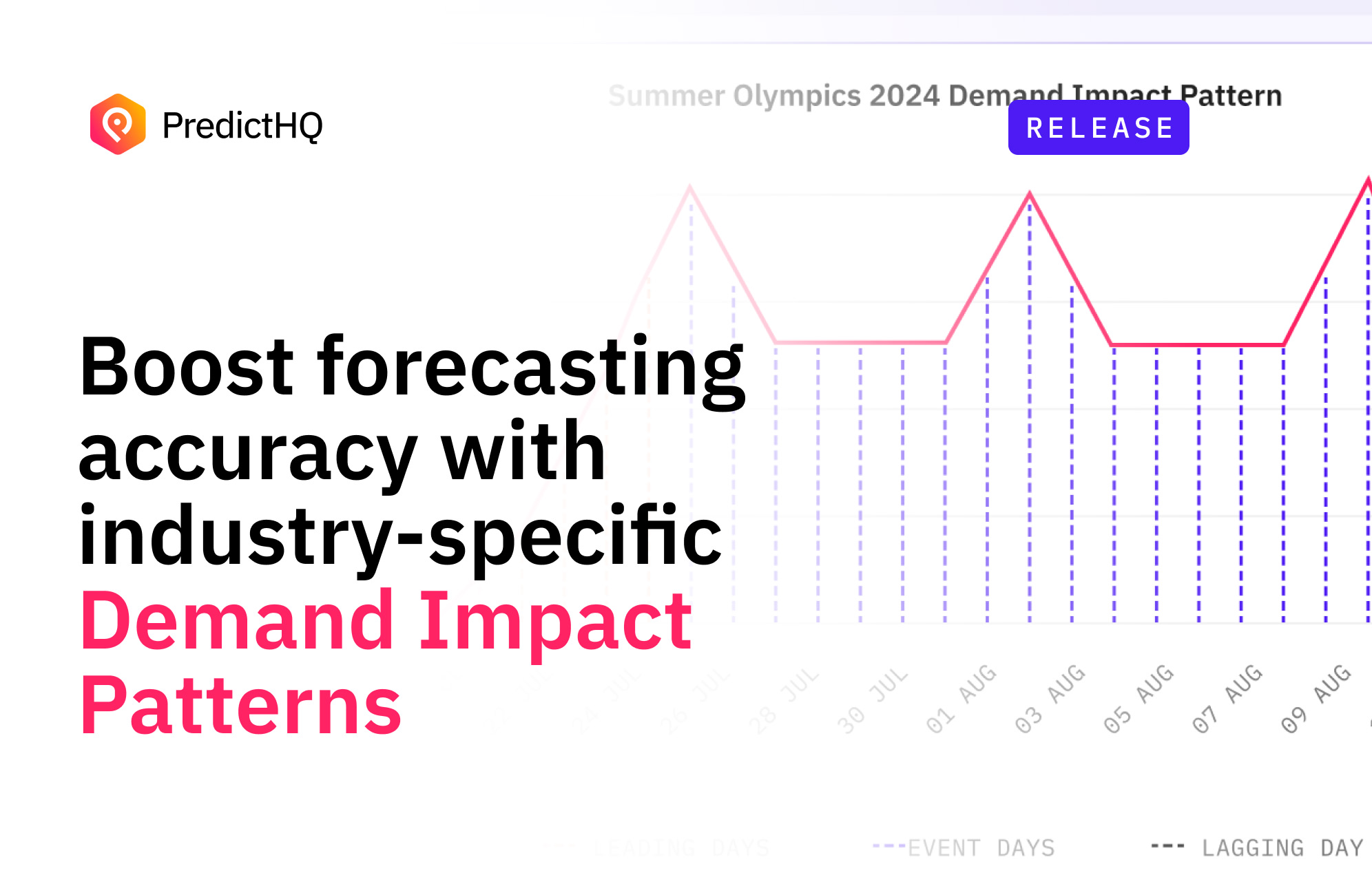Boost forecasting accuracy with industry-specific Predicted Impact Patterns

We've extended Predicted Impact Patterns coverage to several key industries, making it easier than ever to understand how specific events affect your business before, during, and after they unfold.
What are Predicted Impact Patterns?
Some events can impact local businesses days before they begin and after they end, making their actual impact harder to track. Predicted Impact Patterns help you see beyond the immediate impact of events by flagging "leading" and "lagging" days. These are the crucial periods before and after an event that can significantly impact your demand. Attendance and rank during these periods are intelligently modified by our models to taper on during the days leading up to the event, and to taper off in the days following it.

For instance, a concert might not just cause a spike in sales the day of the show. You might see a surge in demand for merchandise or concessions in the days leading up to the event, as fans gear up. You also may see an increase in demand for hotels as attendees may come a day or two prior to the concert to make a weekend out of it. Predicted Impact Patterns capture the entire picture of impact, giving you a more holistic view of how to prepare in advance of higher-than-usual demand levels.
What’s new: Additional industries and event categories covered
Previously, Predicted Impact Patterns only analyzed attended events for the accommodation and restaurant industries. We've now expanded the feature to include the retail industry, allowing you to predict how these events influence shopping behavior.
This means you can now anticipate pre-event shopping sprees for fan gear, conference attire, or festival essentials. Stock up accordingly in preparation for events to capitalize on increased demand. This is an expansion to our already supported accommodation and food & beverage sectors. We’ve built the feature to be industry-specific because industries have different demand patterns around events.
For example, there may be several days of impact on hotel demand prior to a conference or concert, but the impact on retailers may only be 1 day prior.
Industries covered by Predicted Impact Patterns:
Retail ️(new)
Accommodation
Food & Beverage (Restaurants)
We've also expanded Predicted Impact Patterns to include Public Holidays and Observances for the three industries. Get ready to plan for everything from holiday shopping, rushes to restaurants, to a boost in reservations around national holidays. This is an expansion to the 7 other event categories already covered.
Some examples are Independence Day which has a huge impact on retail, Bastille Day in France with a high impact on accommodation, and Mother's Day in the UK which we all know is very important. The leading and lagging impacts of holidays and observances has a large impact on all the industries above.
Below is an example of the accommodation impact pattern for Juneteenth:

The full list of categories included within Predicted Impact Patterns:
Public Holidays (new)
Observances (new)
Concerts
Sports
Festivals
Conferences
Expos
Performing Arts
Community Events
Severe Weather (Retail only)
Boost your forecasting accuracy, and your bottom line
Our tests with industry data show that integrating Predicted Impact Patterns into your forecasting models leads to a significant accuracy boost. We're talking about a 2.2% absolute improvement in MAPE (Mean Absolute Percentage Error) for accommodation businesses compared to using baseline PredictHQ data – that's a game-changer for your bottom line!
Using the new Impact patterns in your demand forecast
Predicted Impact Patterns are supported in the Events API and Features API. If you operate across any of the three covered industries, we highly encourage you to use demand impact pattern enabled ML features and data.
This is because the impact pattern features take into account the impact before the event starts (leading) and after it finishes (lagging). This results in your demand forecast being more accurate due to the observed impact of events being more closely aligned with any changes in demand.
For example, if you are in the accommodation industry and are using public holidays in your forecast use the phq_impact_public_holidays_accommodation ML Features in the Features API, if you are in the Retail industry use phq_impact_public_holidays_retail, and if you are in the food and beverage industry (including restaurants) use phq_impact_public_holidays_hospitality.
See our Demand Forecasting Tutorial for more details.

Ready to see Predicted Impact Patterns in action?
With this expansion, we're empowering businesses across various industries to make smarter decisions, optimize inventory, and ultimately, maximize profits.
Dive into the technical documentation to explore Predicted Impact Patterns for events impacting your business demand.






